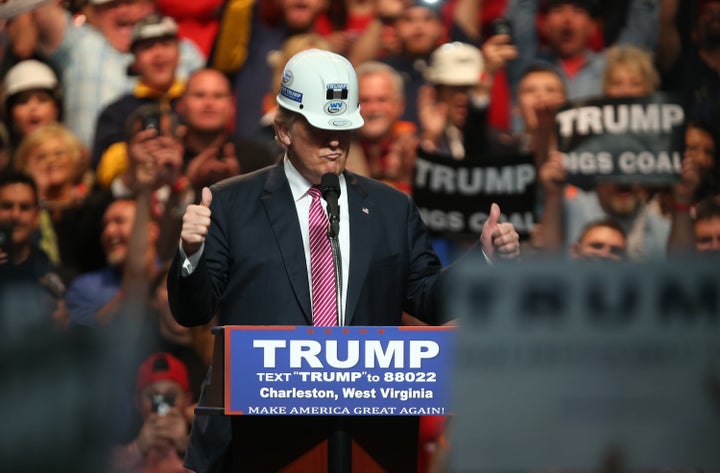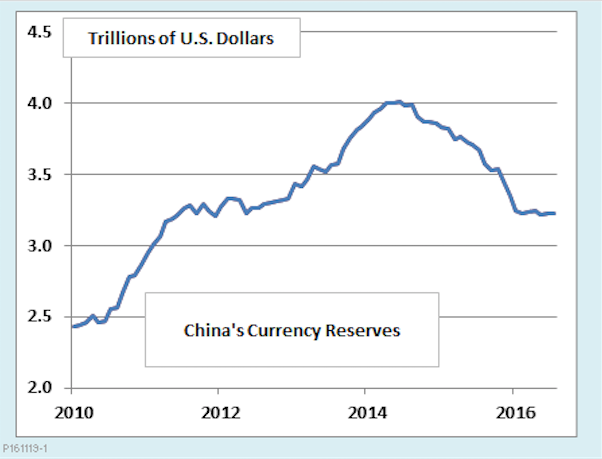
Dramatic promises to restrict international trade were a signature element of Donald Trump’s presidential campaign. So far, he seems to be following through. On Tuesday, he announced that he will withdraw U.S. participation in the Trans-Pacific Partnership as one of his first acts in office.
Trump’s aggressive stance on trade helped him win working-class voters in Midwestern manufacturing states, where upset wins swept him into the White House. As president, Trump will be able to act on trade without approval by Congress. Both the U.S. Constitution and past acts of Congress give the president ample authority to take actions such as withdrawing from the TPP and the North American Free Trade Agreement and imposing retaliatory tariffs on any country he sees as a threat to U.S. economic security.
But American workers would actually not fare well under a protectionist regime, especially older workers and those with few skills and little education, who voted for Trump by wide margins.
The jobs that come back won’t be the ones Trump fans need.
If Trump were to impose tariffs of 35 to 45 percent on Mexican and Chinese goods, as he has threatened, there is no doubt that some manufacturing operations would return to the U.S. However, that does not mean that manufacturing jobs would return.
The problem is that while international trade has contributed to a decline in manufacturing jobs in the U.S., it has not been the largest contributor. The decline in manufacturing employment is mostly due to increased labor productivity, not a decline in manufacturing output. Total manufacturing employment in the U.S. peaked in the 1970s, when China was still suffering under the Cultural Revolution and long before NAFTA was even conceived. However, the share of manufacturing in GDP has barely changed over the last half century. Many people are surprised to learn that even in the highly symbolic automobile sector, the U.S. produced more cars in 2015 than it did 25 years earlier.
“It's not that workers at Ford are losing jobs to workers in China and Mexico. Workers in all of these countries are losing their jobs to robots.”
Those trends are not unique to the U.S. As Harvard economist Dani Rodrik has shown, manufacturing employment, as a share of all jobs, reached its peak in Mexico in 1980, in Brazil in 1986, in Korea in 1989 and in India in 2002. Reliable data are harder to come by for China, but the most recent available numbers suggest that manufacturing jobs in that country are approaching their peak now or perhaps even peaked a year or two ago. To put it simply, it is not so much that workers at Ford are losing jobs to workers in China and Mexico as it is that workers in all of these countries are losing their jobs to robots.
What is more, automation is not affecting all manufacturing jobs equally. Rodrik shows that low-skill manufacturing jobs have been most strongly affected, not just in the U.S. but everywhere you look. The next chart, based on data from a broad sample of 40 countries, shows that in just 13 years, from 1996 to 2009, low-skill manufacturing jobs as a percentage of all low-skill jobs in the economy fell by 4 percent. Meanwhile, even though total manufacturing employment was falling, high-skill manufacturing jobs actually increased as a share of all high-skill jobs.

By implication, even if harshly protectionist policies brought manufacturing operations back to the U.S., our newly made-in-America T-shirts and Christmas ornaments would be fabricated and packaged largely by machines. There might be new jobs for technicians to install and operate those machines, but the low-skill workers who voted en masse for Trump would remain at the cash registers in the big box stores where the products were sold ― if they had jobs at all.
We can’t blame job losses on currency manipulation.
Trump has repeatedly blamed U.S. trade deficits and job losses on currency manipulation, especially by China. He has promised to impose retaliatory tariffs on countries that have purposely weakened their currencies to keep their exports artificially cheap. But the reality is more complicated. Far from holding down the value of their currencies, two of the main countries Trump targets for retaliation, China and Mexico, have, at least recently, been fighting to keep their currencies strong.
Policy details differ in the two countries. When Chinese authorities want to weaken the renminbi, they do so by asking China’s central bank, the People’s Bank of China, to buy dollars to add to foreign exchange reserves. The Chinese did that consistently until early 2014. But since then, as the following chart shows, China has been selling reserves at a frantic pace in an attempt to keep the renminbi strong. Despite those efforts, fear of a trade war has pushed the renminbi sharply lower since Election Day in the U.S.

Mexican policy works a little differently. Instead of directly manipulating exchange rates by buying and selling reserves, Mexico’s central bank, like the U.S. Federal Reserve, focuses its monetary policy on interest rates. Interest rates, in turn, can be used to affect exchange rates indirectly, since raising rates encourages capital to flow toward Mexico and boosts the value of the peso. Twice this year, once before and once after the election, Mexico has raised its rates. But as in the case of China, its efforts have not been fully successful. The peso has fallen to record lows anyway.
There is a deep irony here. Contrary to Trump’s claim that our trading partners manipulate their currencies to undercut American workers, China and Mexico have been fighting to keep their currencies strong. Yet Trump’s protectionist bluster has spooked the markets so badly that the renminbi and peso have depreciated anyway. On the currency front, the more Trump rants, the harder he makes it for his American working-class supporters to hang onto their jobs.
Falling labor mobility means U.S. workers are less adaptable.
Economists have long acknowledged that free trade produces losers as well as winners. To be sure, the Pollyannas among them have assured us that the losses are transitory. Trade-displaced workers, they have said, get back on their feet as they move to new jobs in export industries. Meanwhile, as cheap goods flood the stores, those workers, like everyone else, enjoy a lower cost of living.
Recent research suggests, however, that the picture is not quite so bright. Globalization has brought many benefits, to be sure, but the losses have been more persistent and more concentrated than the optimists expected. A widely cited study by David Autor, David Dorn and Gordon Hanson examines the effect of sudden changes in patterns of trade, or what the authors call “trade shocks.” Focusing on the largest of these, “the China shock,” they reach a number of pessimistic conclusions.
Most importantly, they find that the impact of trade shocks is far from temporary. Job losses and lower wages in hard-hit regions persist for years. Furthermore, because the effects are geographically concentrated, labor mobility is not sufficient to ensure that losses by workers are widely shared across regions and industries. Nor is it true, as some optimists have promised, that workers displaced by trade shocks quickly find comparable jobs in export industries.
Moreover, Autor and his colleagues find that trade shocks disproportionately affect low-wage workers within affected regions and industries. Those who do find work often end up in services or other sectors where jobs do not fit their skills and wages are lower. Others turn to government assistance, including unemployment benefits, disability benefits and food stamps.
What is more, evidence from other studies suggests that it has become harder over time for the U.S. labor market to adjust to trade shocks. One major reason is decreased labor mobility. As evidenced in the chart below, in the 2000s, fewer Americans left one state for another, as compared to the 1980s.

Food stamps and other safety net programs include disincentives to moving. Less than fully portable health care can also make it hard for displaced workers to move to where the jobs are, especially if their coverage comes through the employer of another family member. President Obama’s Affordable Care Act has made some improvements but since much health care coverage is still employer-based and because options vary widely from state to state, it has not fully solved the problem of portability.
The spread of occupational licensing to a third of all jobs today, way up from 5 percent in the 1950s, is another factor that undermines mobility. The fact that licenses are not automatically transferable from state to state creates an obvious problem for any trade-displaced worker in a licensed profession. Even a displaced worker in a unlicensed profession may find it hard to move to a new job if the family depends on income from a spouse who is a state-licensed math teacher, manicurist or pest control worker.
The protectionist cure is worse than the globalization disease.
The decreasing flexibility of the labor market matters because a sudden turn toward protectionism would impose a tremendous shock. Today, after years of painful adjustment to globalization, wrenching moves and costly retraining, most workers displaced by the China shock, the NAFTA shock and other trade shocks have found new jobs and new homes. Imposition of new tariff barriers and withdrawal from trade agreements would make it necessary to go through all of that pain again.
“Turning away from trade might make America more self-sufficient. But as with globalization, it would create losers as well as winners.”
Millions of American workers in export industries would lose their jobs as trading partners retaliated or as those countries simply became too poor to buy Boeing aircraft or U.S.-made MRI machines. Millions of other Americans who work in finance and transportation services that support trade would also find their jobs threatened, as would those who work in the sales, marketing and retailing of goods the U.S. now imports.
In short, the dream that protectionism could make America great again in the way many Trump supporters imagine is an illusion. Yes, at considerable cost, a sharp turn away from trade might make America more self-sufficient, but that process, like globalization itself, would create losers as well as winners. The lower-skilled, less-educated and older workers who voted most heavily for Trump would almost certainly be among the losers.

